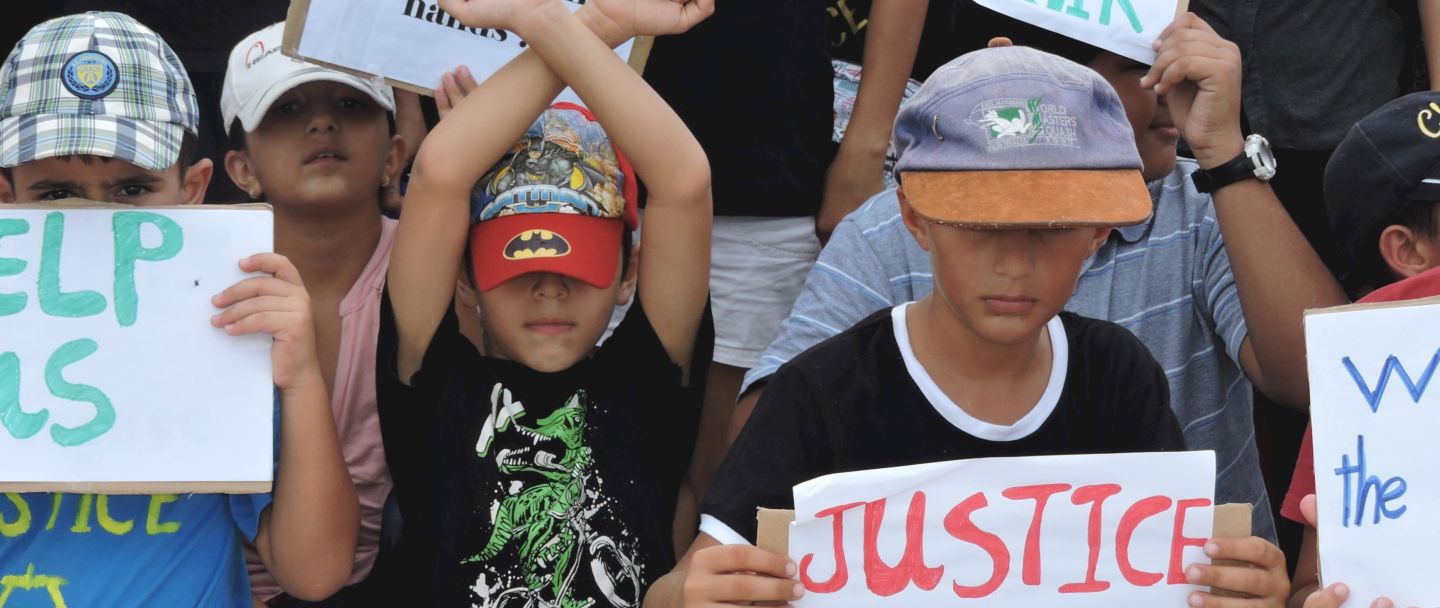By Anna Neistat, Amnesty International’s Senior Director for Research
There was a time when Australia led the way on refugee protection.
Following World War II, Australia came second only to the United States on resettling European refugees. Its signature brought the Refugee Convention into force a few years later. And, in the 1970s, it resettled the third highest number of Indochinese refugees following the wars there.
Sadly those days are a distant memory. After earning global notoriety for the cruelty it continues to inflict on refugees and people seeking asylum on Nauru and Manus Island, the Australian government has shown it is capable of worse.
Not only is the government refusing to shut down its centres on the two Pacific islands, it is now planning to introduce a law to permanently ban the people trapped there from getting a visa to Australia.
Not only would this bill be a clear violation of international law, but it is a cruel and mean-spirited move to further discriminate against how people travel to Australia in search of safety. As a state party to the Refugee Convention, the Australian government has an obligation to treat asylum-seekers and refugees humanely and safely resettle them. Instead, it is choosing to pile one injustice on top of another.
In July I travelled to Nauru to conduct research for Amnesty International’s new report about refugees and asylum-seekers. I spent five days on the island and met with 58 refugees and people seeking asylum, as well as four service providers. Many people told me of the journeys they were forced to take. They braved great dangers to escape even greater ones at home.
On Sunday, speaking to reporters, Prime Minister Malcolm Turnbull conceded that Australia’s processing policy is “a disaster”, though he doesn’t appear to grasp why. The main problem is not “unauthorized arrivals”, as Turnbull claimed. It is that in an attempt to stop them Australia has created an open-air prison on Nauru.
The Australian government has been charting a dangerous course for many years. Now, after a cascade of revelations – from an array of independent and credible sources – it not only refuses to confront reality, but is intent on accelerating in the wrong direction.
Visiting Australia recently, I was struck by the government’s reaction to our report, Island of Despair: Australia’s “processing” of people on Nauru. Growing up and working in Russia, I was wearily familiar with blanket denials from officials and attacks from journalists who toe the government line. I scarcely expected to see the same tactics on display in a multi-party democracy that prides itself on its values and claims moral authority on human rights.
We were by no means the first to raise concerns about human rights abuses on Nauru. As far back as 1998, a report by the Australian Human Rights Commission on the detention of “boat people” noted a series of complaints on “the length and the indefinite nature of the period of detention and the effects that this has on detainees’ physical and mental health.”
Almost everyone I spoke to on Nauru had experienced a deterioration in their mental health. The Australian government has known such conditions create mental anguish. They knew this well before the people currently on Nauru were taken there. And yet it persisted with practices that inflict intentional harm, with the aim of intimidating and coercing people, so their condition can serve as a deterrent.
Under international law, this amounts to torture. It’s not a claim we make lightly, nor is it the first time the Australian government has been accused of it. Last year, a UN Special Rapporteur, appalled by the treatment of people on Manus Island came to the same conclusion based on the conditions there.
Not long after I visited Nauru, The Guardian published more than 2000 leaked incident reports that confirmed our findings and revealed a systematic pattern of abuse. In October, the UN’s Committee on the Rights of the Child noted with alarm how conditions in the processing centres are “generating and exacerbating mental health issues, leading to feelings of hopelessness and often suicidal ideation.”
Other UN agencies and leading NGOs who spoke out in recent months reached the same conclusion: Nauru and Manus Island processing centres must be shut immediately.
Wherever I went in Australia, I met people who thanked Amnesty International for telling the truth about their government’s practices. Even those sympathetic to Canberra’s aims were appalled by the now tattered shroud of secrecy it threw over their eyes.
They deserve to know why people seeking refuge are being harmed in the name of strong border protection, when no border control practices should rely on a system of torture.
Globally, Australia faces a crisis of credibility. The government wants a seat on the UN Human Rights Council. But as the reaction to our report shows, few believe it is suited to lead on human rights. “Australia’s inhumane imprisonment of desperate people,” The New York Times editorial board wrote last month, “is a disgrace.”
The Australian government has a clear choice before it. It can either pull back, change course, and recover Australia’s standing as a country that protects human rights – or it can decide to be known as a country that deliberately and systematically abuses thousands of people.
Originally published in SMH
Help get 1,200 people on Nauru to safety in Australia:
Take Action Now

